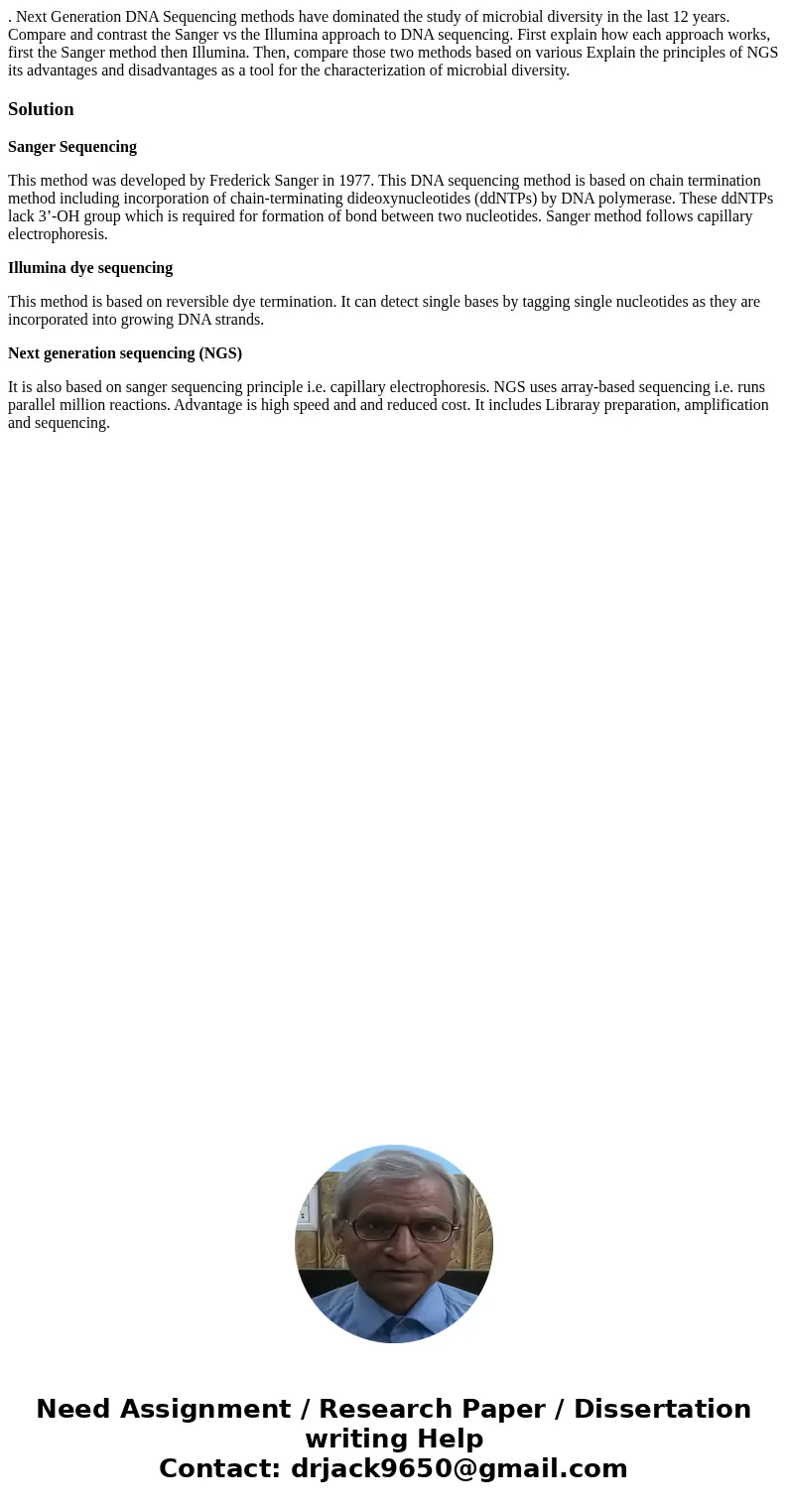Next Generation DNA Sequencing methods have dominated the s
. Next Generation DNA Sequencing methods have dominated the study of microbial diversity in the last 12 years. Compare and contrast the Sanger vs the Illumina approach to DNA sequencing. First explain how each approach works, first the Sanger method then Illumina. Then, compare those two methods based on various Explain the principles of NGS its advantages and disadvantages as a tool for the characterization of microbial diversity.
Solution
Sanger Sequencing
This method was developed by Frederick Sanger in 1977. This DNA sequencing method is based on chain termination method including incorporation of chain-terminating dideoxynucleotides (ddNTPs) by DNA polymerase. These ddNTPs lack 3’-OH group which is required for formation of bond between two nucleotides. Sanger method follows capillary electrophoresis.
Illumina dye sequencing
This method is based on reversible dye termination. It can detect single bases by tagging single nucleotides as they are incorporated into growing DNA strands.
Next generation sequencing (NGS)
It is also based on sanger sequencing principle i.e. capillary electrophoresis. NGS uses array-based sequencing i.e. runs parallel million reactions. Advantage is high speed and and reduced cost. It includes Libraray preparation, amplification and sequencing.

 Homework Sourse
Homework Sourse